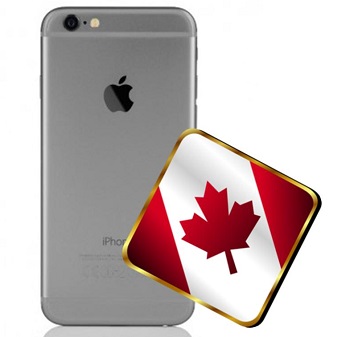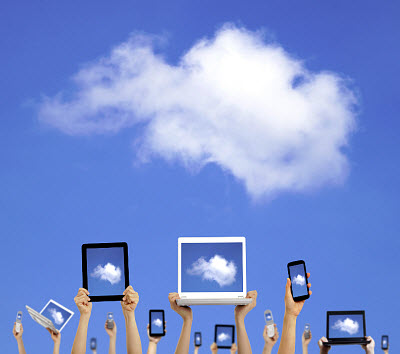Apple Pay has finally come to Canada, officially launched this week
Apple Pay has officially launched in Canada, where it may be able to find more traction among consumers than it has in the United States. Apple launched its mobile payments platform in the U.S. late last year, but Apple Pay has not found the degree of success that Apple had expected. Of the 1 million people that are registered for Apple Pay, approximately only 5% use the service regularly. In Canada, Apple may be able to find more consumers that are interested in mobile payments.
Consumers in Canada have shown a great deal of interest in mobile payments
Canadian consumers now have access to Apple Pay, which will allow them to use their mobile devices to make purchases at physical stores and online. Physical payments are accomplished by “tapping” the mobile device to a payment terminal, which is equipped with NFC technology. NFC is designed to transmit data over short distances, which makes it an ideal tool for mobile payments. Only those with the latest iPhones will be able to use Apple Pay, however, due to the fact that these are the only iPhones that are equipped with NFC technology.
Apple is slowly breaking into new markets with its mobile payments service
 Apple has opted to take a relatively slow approach to the expansion of its mobile payments service. The company has shown interest in bringing the service to other countries, but it has opted to take its time in doing so. The slow approach may pay off in the long run, as consumers will become more comfortable with mobile payments when apple Pay becomes more available.
Apple has opted to take a relatively slow approach to the expansion of its mobile payments service. The company has shown interest in bringing the service to other countries, but it has opted to take its time in doing so. The slow approach may pay off in the long run, as consumers will become more comfortable with mobile payments when apple Pay becomes more available.
Consumers in the US are lagging when it comes to mobile payments adoption
While consumers are becoming more interested in mobile payments, they still prefer more traditional forms of commerce, such as paying with plastic cards and using physical currency. In the United States, mobile payments is growing, but at a slower pace than what is being seen in other countries. As such, many organizations are beginning to focus on these markets with their mobile payments services.
Apple Pay could become a more powerful platform with the help of the Cloud
Apple may benefit by shifting its mobile payments platform, Apple Pay, to the Cloud. Apple Pay was launched late last year and quickly managed to gain support from Apple fans. According to Apple, the mobile payments platform has more than 1 million users, though a relatively small number of these consumers are actually using the platform to purchase products online and in physical stores. Connecting the platform to Apple’s powerful Cloud could lead to some benefits for the payment service.
Competition is forcing Apple to look for new ways to engage mobile consumers
Apple is facing growing competition from various companies that are interested in mobile payments. These companies want to establish a foothold in this sector and some have already launched their own mobile payments services. In order to beat the competition, Apple will have to find new ways to engage consumers and provide them with valuable services. Shifting to a cloud-based service may provide Apple Pay with a fighting edge against the competition, as it would lead to several benefits.
Cloud integration could ensure consumer loyalty and provide better payment services
 One of the benefits of migrating Apple Pay to the Cloud would be customer loyalty. A recent survey found that approximately 5% of iPhone owners use Apple Pay regularly, with some preferring to use traditional forms of commerce. The Cloud may also be able to introduce a wide range of value-added services, such as allowing consumers to store digital receipts for record keeping purposes. Notably, the Cloud could also lead to a smarter Apple Pay, one which can learn from the shopping habits of its user and offer a better mobile payments experience.
One of the benefits of migrating Apple Pay to the Cloud would be customer loyalty. A recent survey found that approximately 5% of iPhone owners use Apple Pay regularly, with some preferring to use traditional forms of commerce. The Cloud may also be able to introduce a wide range of value-added services, such as allowing consumers to store digital receipts for record keeping purposes. Notably, the Cloud could also lead to a smarter Apple Pay, one which can learn from the shopping habits of its user and offer a better mobile payments experience.
Apple Pay has had trouble effectively engaging consumers
While Apple has taken a strong interest in mobile payments, the company’s payments service has struggled to find mainstream success. Apple Pay’s initial launch was supported by a wide range of retailers and banks, but these organizations are beginning to show strong favor for other payment services, largely because they do not charge fees like Apple Pay does. Mobile payments have yet to attract the favor of the majority of consumers as well, with many preferring traditional forms of payment.
 Apple has opted to take a relatively slow approach to the expansion of its mobile payments service. The company has shown interest in bringing the service to other countries, but it has opted to take its time in doing so. The slow approach may pay off in the long run, as consumers will become more comfortable with mobile payments when apple Pay becomes more available.
Apple has opted to take a relatively slow approach to the expansion of its mobile payments service. The company has shown interest in bringing the service to other countries, but it has opted to take its time in doing so. The slow approach may pay off in the long run, as consumers will become more comfortable with mobile payments when apple Pay becomes more available.
 One of the benefits of migrating Apple Pay to the Cloud would be customer loyalty. A recent survey found that approximately 5% of iPhone owners use Apple Pay regularly, with some preferring to use traditional forms of commerce. The Cloud may also be able to introduce a wide range of value-added services, such as allowing consumers to store digital receipts for record keeping purposes. Notably, the
One of the benefits of migrating Apple Pay to the Cloud would be customer loyalty. A recent survey found that approximately 5% of iPhone owners use Apple Pay regularly, with some preferring to use traditional forms of commerce. The Cloud may also be able to introduce a wide range of value-added services, such as allowing consumers to store digital receipts for record keeping purposes. Notably, the 